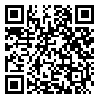Volume 5, Issue 1 (2017)
CLRJ 2017, 5(1): 84-119 |
Back to browse issues page
Download citation:
BibTeX | RIS | EndNote | Medlars | ProCite | Reference Manager | RefWorks
Send citation to:



BibTeX | RIS | EndNote | Medlars | ProCite | Reference Manager | RefWorks
Send citation to:
mottahed S, hasanli K, kiyani H. The female symbols in contemporary persian & arabic poems (with lyrics of Ahmad shamlu and Abdul Wahab al-Bayati). CLRJ 2017; 5 (1) :84-119
URL: http://clrj.modares.ac.ir/article-12-8417-en.html
URL: http://clrj.modares.ac.ir/article-12-8417-en.html
1- student of shiraz
2- member of persian Language and Literature faculty at shiraz university
3- member of Arabic Language and Literature faculty at shiraz university
2- member of persian Language and Literature faculty at shiraz university
3- member of Arabic Language and Literature faculty at shiraz university
Abstract: (8783 Views)
This article is a comparative sociological study and it shows some effects of changes in social relations which is the result of modernity in iranian and arabic communities.
This study inspects the Iranian and Arabic community and its deals with the female symbols as the one of social development indicators. Based on this, the use of female symbols and myths was assessed and compared in Abdol Vahab Albayati & Ahmad Shamlu’s poems.
This study ultimately concludes that female symbol’s log in to poetry, not as a beginning of a course but it’s the result of a circulation which tries to change social relations and create a new balance between two powers in society. Addressing female symbols, in addition to give poet the possibility of addressing the mythical topics; is an attempt to empower the hidden half of the population that was held back for years. And this is not a feminist effort, but it’s blowing lyrics the spirit of gentleness and describes the hidden part of the community that would appear in the light of modernity and this effort has many examples in both Persian and Arabic literature.
This study inspects the Iranian and Arabic community and its deals with the female symbols as the one of social development indicators. Based on this, the use of female symbols and myths was assessed and compared in Abdol Vahab Albayati & Ahmad Shamlu’s poems.
This study ultimately concludes that female symbol’s log in to poetry, not as a beginning of a course but it’s the result of a circulation which tries to change social relations and create a new balance between two powers in society. Addressing female symbols, in addition to give poet the possibility of addressing the mythical topics; is an attempt to empower the hidden half of the population that was held back for years. And this is not a feminist effort, but it’s blowing lyrics the spirit of gentleness and describes the hidden part of the community that would appear in the light of modernity and this effort has many examples in both Persian and Arabic literature.
Article Type: Research Paper |
Subject:
Pathology of Schools and Approaches to Adaptive Literature
Received: 2016/09/13 | Accepted: 2017/03/21 | Published: 2017/07/1
Received: 2016/09/13 | Accepted: 2017/03/21 | Published: 2017/07/1
| Rights and permissions | |
 |
This work is licensed under a Creative Commons Attribution-NonCommercial 4.0 International License. |








